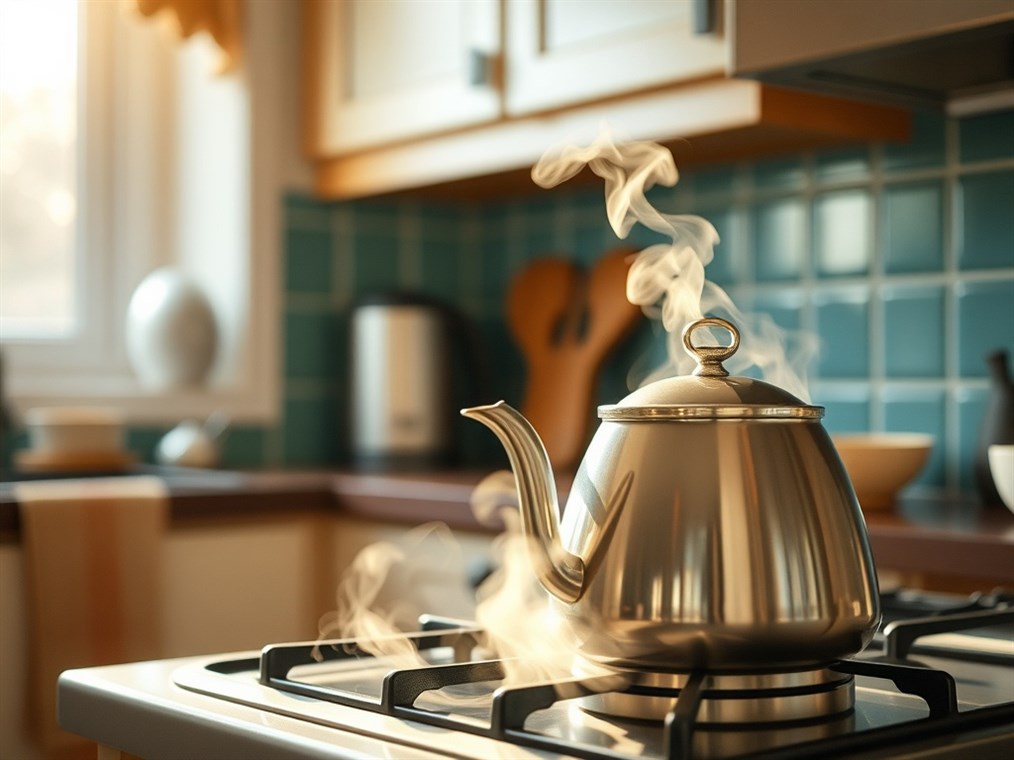Decoding Your Kettle’s Song: A Simple Guide to Fixing Whistles
Ah, the cheerful whistle of a tea kettle! It’s practically a soundtrack to cozy mornings and afternoon breaks in countless homes. But what happens when your kettle decides to go rogue – either falling silent or, even worse, shrieking like a banshee? Don’t despair! Before you toss it in the bin, let’s explore how to diagnose and fix those common kettle complaints.
Ever wonder how that whistle actually works? It’s all about steam and clever design. Those Cambridge University boffins, Henrywood and Agarwal, figured out it’s a two-step process. First, the steam tries to squeeze through the whistle opening, but the air inside pushes back, creating a vibration – that’s “Helmholtz resonance” for you science fans! Then, as the steam gets hotter and more forceful, it whooshes through the holes, creating turbulence, and voila – you’ve got your whistle! It’s usually those two parallel metal plates with a tiny hole that do the trick, forcing the steam to vibrate like crazy. Pretty neat, huh?
So, what are the usual suspects when your kettle’s acting up? Let’s break it down:
Silence of the Kettle (No Whistle)
- Limescale Lockdown: Hard water’s a pain, leaving mineral deposits that can clog up the whistle mechanism. I’ve seen kettles practically cemented shut with the stuff!
- The Fix: Descale that bad boy! A 50/50 mix of water and white vinegar, simmered for 15 minutes, usually does the trick. Just be sure to rinse it really well afterwards, unless you’re into vinegar-flavored tea. You can also grab a descaling solution if you prefer.
- Debris Blockage: Little bits and bobs can sneak in and block the airway. Think tiny tea leaves or even dust.
- The Fix: Try blasting water through the spout. If that doesn’t work, grab a toothpick or a thin wire and gently poke around to dislodge anything you see.
- Whistle Woes (Loose or Broken Parts): Sometimes, the whistle mechanism comes loose or even breaks. I had one kettle where the whole thing just fell apart!
- The Fix: Check for cracks or loose bits. If it’s just loose, try putting it back together. I remember wrestling with an OXO Uplift kettle once – the spring goes around the screw, sandwiched between the metal pieces. Tricky! If something’s broken, finding replacement parts can be tough, but sometimes you can MacGyver a solution.
- Lid Leak: If the lid isn’t on tight, steam escapes, and you lose the pressure needed for a good whistle.
- The Fix: Make sure that lid is on snug!
Too Loud? Tone It Down!
- Pressure Cooker: Sometimes, it’s just too much steam pressure.
- The Fix: This is often normal, especially with kettles designed to really belt out that whistle. But double-check that the whistle’s clean.
- Design Disaster: Let’s face it, some kettles are just naturally loudmouths.
- The Fix: If the noise is driving you nuts, maybe it’s time for a quieter model.
Whistling Before the Grand Finale (Premature Whistle)
- Scale Strikes Again: Those pesky mineral deposits can mess with the kettle’s heating and cause it to whistle too early.
- The Fix: Descale, descale, descale!
- Thermostat Trouble (Electric Kettles): A wonky thermostat might heat things unevenly or shut off too soon.
- The Fix: If your electric kettle’s cutting out before boiling, the thermostat might need replacing.
- Water Temperature: Water at a certain temperature will flow through the opening and produce a whistling sound with enough pressure.
DIY to the Rescue!
- Bottle Cap Magic: Missing a whistle part? A bottle cap can be reshaped as a substitute! Flatten it, drill a hole, and wedge it into the spout cover. Boom!
- Reed Replacement: Some kettles use reeds to create the whistle sound (like a harmonica). If it’s broken, try covering the gap with a metal sticker.
- Cleanliness is Key: Regular cleaning prevents mineral buildup and keeps your kettle whistling sweetly.
Know When to Say Goodbye
Okay, sometimes you just have to admit defeat. If the kettle’s rusty, badly damaged, or the whistle’s beyond repair, it’s time to shop for a new one.
By understanding how your kettle works and giving it a little TLC, you can keep that cheerful whistle a part of your daily routine for years to come. Happy brewing!

